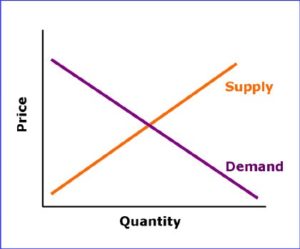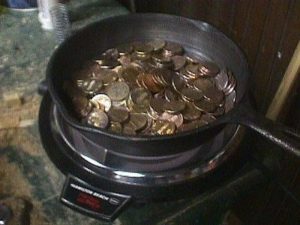Coin Values
A lot of people ask me all the time what are coins worth, and if there is money in coins. I try not to giggle at the last one. But it is a reasonable question for those not in the field.
Coins, you see, are money, we all know that, so they have a “worth” in the markets at face value. All United States coins are worth their face value, at the minimum. However, and this is KEY. Some are worth more than their face value, a LOT more.
So, what makes a coin worth more than its face value. The same thing that makes anything valuable in a market economy. Rarity (and demand). Ahh the old chart from HS…..
Things that can make a coin rare are its denomination (penny, dime, nickel), date (years it was minted), mint (where it was made), mintage (how many were made), wear (how close to brand new it is), metallurgical makeup (silver, gold, nickel) and how many are estimated to survive. Things like war, a crap economy, fear, earthquakes, and the like can make coins disappear from circulation. People may melt down the coins, horde them, or they may just be lost to time and nature.
Fun Fact: it is ONLY illegal to melt down the US Copper Penny, you can melt down all over US coins. Yeah, I know that makes no cents (sense, pun).
So what is your coin worth, it is hard to tell, but it could be a bit more than the amount stamped on it! Now not all coins can sell for six figures. Sometimes it just means that your penny is worth 3 cents, which is a high return on investment, but not that cool looking when you write it out on a check!


